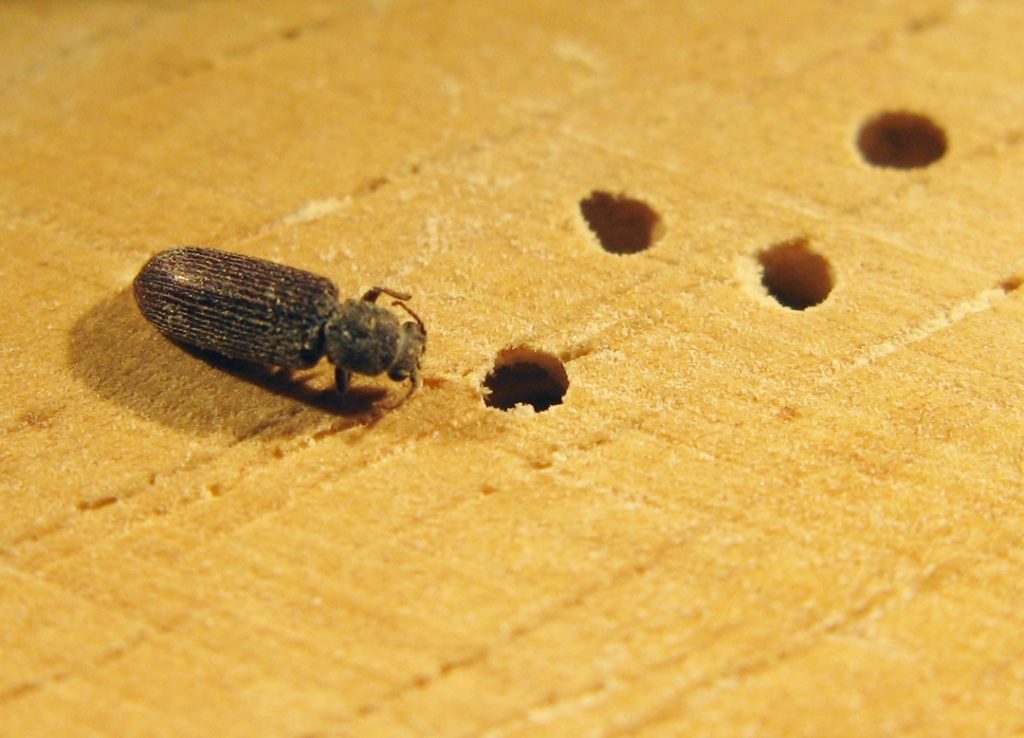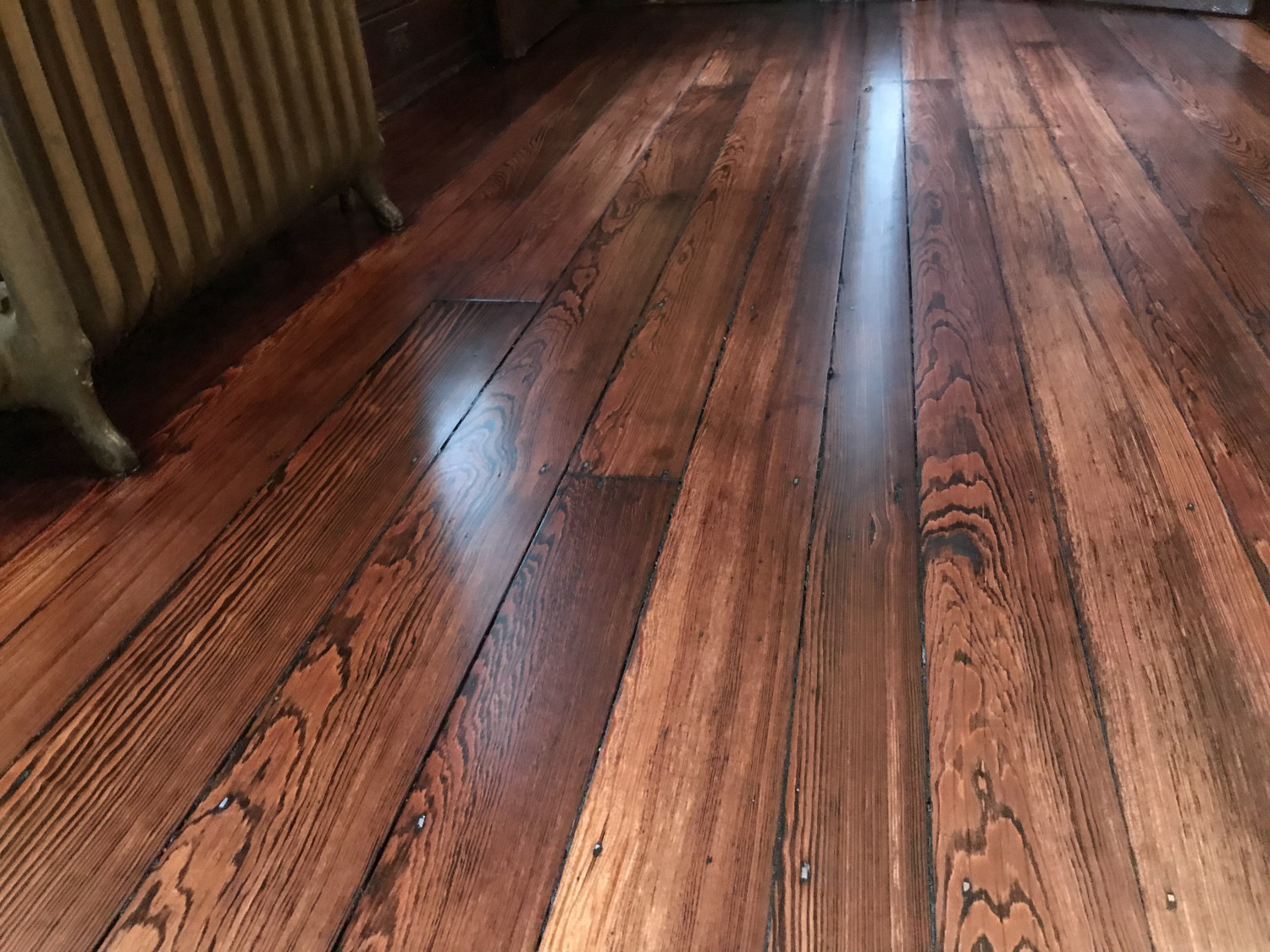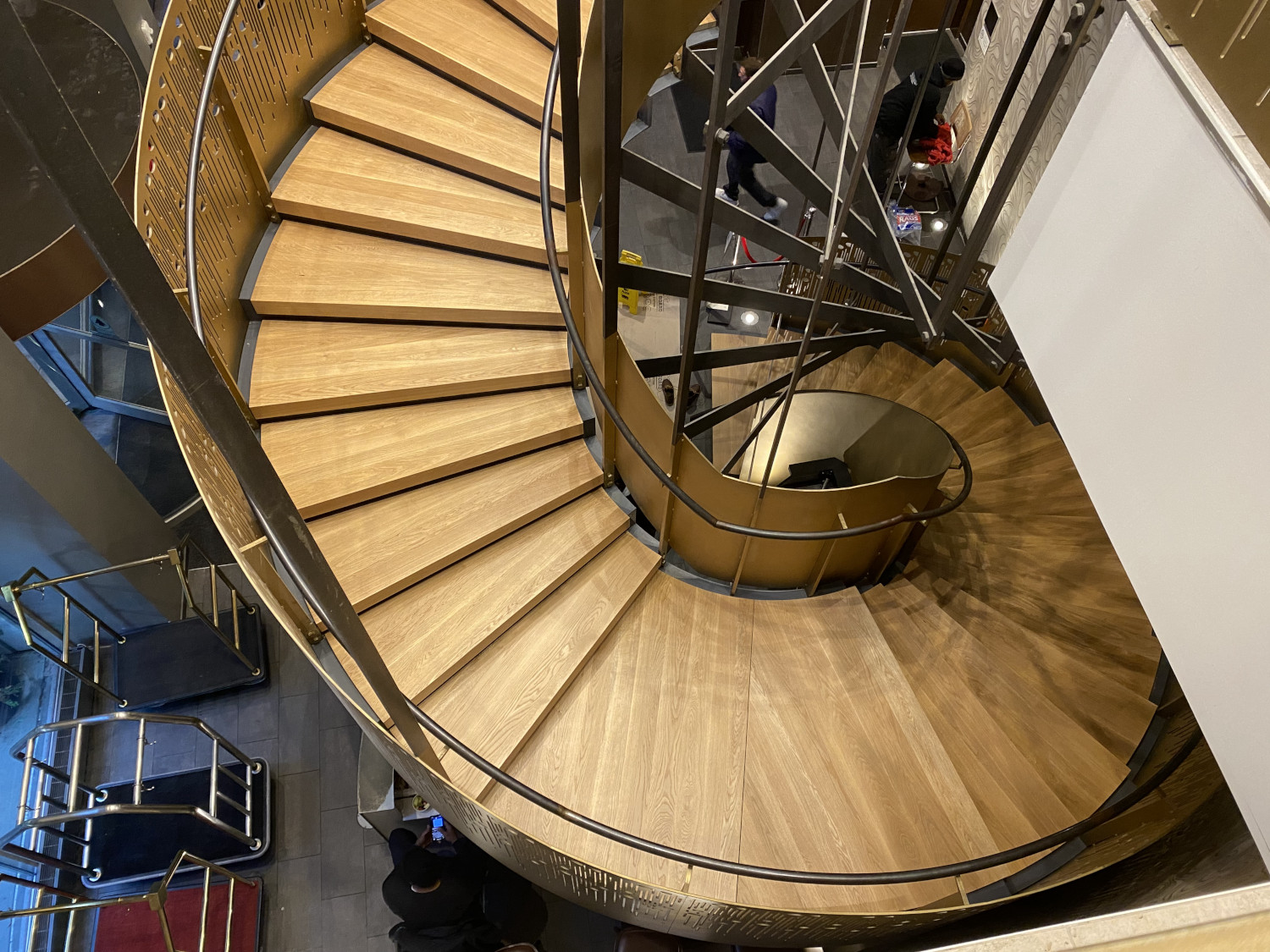Powder post beetles are second to termites in their ability to damage dry, seasoned wood. They are called “powder post beetles” due to their ability to reduce wood to a flour-esque powder. Infestations usually occur in late winter, spring, or summer depending upon the species of these beetles.
Their infestations are usually discovered after noticing powder and small holes in the surface of the wood. Those holes are called “exit holes,” which adult beetles have chewed out of the wood. Larval development of these beetles takes place entirely below the wood’s surface. The developing larvae inflict damage by creating narrow tunnels in the wood as they feed. Hence, the “exit holes.”
People are more likely to see the damage made by these beetles rather than the beetles themselves since they are mostly active at night and their presence is cryptic. Occasionally, the beetles may be found near the damaged wood, or on windowsills since some of them are attracted to light.
The three most destructive types of powder post beetles are lyctids, bostrichids, and anobiids.
Lyctid Beetles
Lyctid beetles are small and narrow. They are approximately 1/16 to ¼ of an inch long. Their colors range from reddish-brown to black. Their emergence holes are round and pinhead-sized. The powdery dust they leave behind feels like flour.
They only attack products manufactured from hardwood trees such as walnut, oak, ash, poplar, hickory, or cherry. Tropical hardwoods are especially vulnerable to lyctid infestation due to poor storage and drying practices before importation. Wood surfaces that are stained, varnished, waxed, or painted are immune from attack, although larvae made inside infested wood may emerge through surfaces.
Bostrichids Beetles
Bostrichids range in size depending on the species. Most are reddish-brown to black and vary in size from 1/8 to ¼ of an inch. Compared to lyctids, bostrichids are less narrow-bodied and flattened, and their heads appear “hooded.” Their size allows them to make 1/8 to ¼ inch holes in wood like other powder post beetles.
The wood powder produced by bostrichids is more “meal-like” than the powder produced by lyctids. Bostrichids usually attack newly processed woods with high moisture and starch content. Tropical hardwoods, including bamboo, are the most vulnerable to the bostrichids’ attacks, which often occurs before importation. Although bostrichids rarely re-infest their wood after the first generation emerges, the extensive damage might occur through the first year due to a high initial population and rapid development.

Anobiid Beetles
Anobiid beetles are reddish to dark brown colored, capable of attacking both softwoods and hardwoods. They are often confused with the drugstore and cigarette beetles that infest stored foods in people’s homes. The anobiids’ emergence holes are 1/16 to 1/8 of an inch. If you rub the powder they leave behind between your fingers; it feels gritty.
Unlike the other beetles previously discussed, anobiids can severely damage joists, beams, and other structural components of buildings. Anobiids prefer to infest moist woods, so a 13%-30% moisture content is required for their type of infestation. Their infestations are most severe in damp crawl spaces, garages, basements, and unheated buildings. Buildings with central cooling and heating rarely have dampness to support this type of beetle development in living areas or attics.
Treating Your Hardwood Floors for Powder Post Beetles
It is essential to know whether the infestation is active or inactive before taking action to rid your wood, building, or home from these beetles. Active infestations usually have powder the color of freshly sawed wood around the exit holes. Check to see this type of powder to confirm an active infestation. Another way to verify an active infestation is to mark or seal any existing holes, vacuum or sweep the holes, and recheck the wood for new holes or powder later on.
There are different options for controlling powder post beetles, such as wood replacement, moisture control, residual insecticides, and fumigation. Choosing the best option depends on factors such as the potential for re-infestation, the degree of damage, and expense.
If you’re afraid your hardwood floors might be infested with Powder Post Beetles call Steve Albert at 215-515-7355 to learn how we can help fix your pest problem and revitalize your floors.
Recent Hardwood Flooring Projects in Philadelphia & NJ





0 Comments